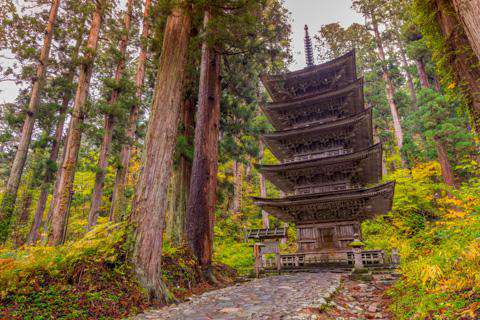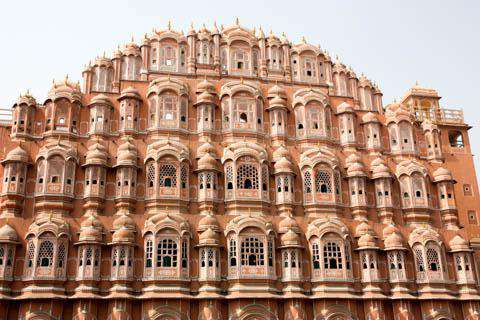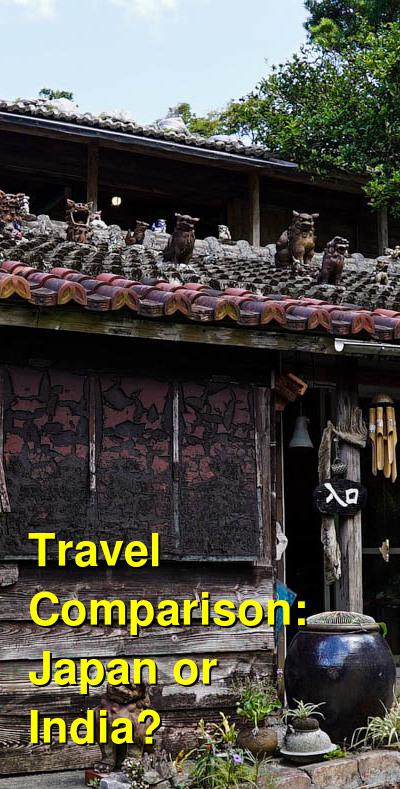Should you visit Japan or India?
India's overall low cost and status as a developing nation contrasts sharply with Japan's high-end and high-tech luxury. Japan is significantly more expensive for a number of reasons, but both countries attract huge numbers of travelers every year.
Japan is a nation of deep history and culture wrapped in a modern technological wonderland. Here you can visit ancient temples and castles and then participate in a sci-fi anime film festival on the same day. Outside of the larger cities, a calm agricultural countryside awaits you. Here you can go biking, hiking, boating, or even relax on a beach.
The Indian tourism slogan is "Incredible India" and it is quite accurate! This massive nation is rich with beautiful culture, ancient history, amazing food, and a diverse set of activities to pique the interest of any traveler. From hiking in the Himalayas to tropical beaches in the south, to staying on houseboats in Kerala, to religious experiences in Varanasi, India has something for everyone.
And India is very affordable, too. At nearly every price range, travelers find India to be a good value. If you want to travel on a shoestring budget, India will reward your wallet with amazing gems at extremely low prices. But if you want luxury, India also offers terrific service, food, and accommodation options at amazing values.
The downside of India? Sometimes the culture of India can be a shock to visitors. Even when staying in more luxurious areas, it is almost impossible to shield yourself from India's high rates of poverty, population density, and diverse culture. First-time visitors can find it to be agitating, but once you embrace the culture and the excitement, you'll have no trouble experiencing India for the amazing destination that it can be.
Which country is cheaper, India or Japan?
Should I visit Japan or India? This is a popular question for many travelers. By figuring out which country is more expensive, you'll understand where you'll get more bang for your buck. A week in India can cost you about $274 (per person), while a week in Japan may cost you around $855. These differences become even more noticable if you plan to spend a longer time in the country. 10 days, two weeks, or even one month of travel to India or Japan can really add to your travel budget.
Accommodation is often cheaper in India compared to Japan ($17 vs. $58). Budget travelers usually stay in less expensive hostels and guest houses, while nicer hotels often appeal to families and upscale travelers.
Compare hotel prices here: Japan Hotel Prices and India Hotel Prices.
Or, compare hostel and guesthouse prices between India and Japan to find the cheapest accommodation here: India hostels and Japan hostels.
When comparing food in Japan vs. India they are not just different in cuisine, but also in price. Meal and restaurant costs in Japan ($30) are often cheaper than India ($10).
When is the best time to visit Japan and India?
 Dewa Sanzan, Japan
Dewa Sanzan, Japan
Japan experiences four full seasons, much like Europe and North America. Winters in northern Japan can be quite cold and snowy. The south is generally mild and warmer in the winter, however. Summers are the peak travel time, especially in the larger cities in the central and northern regions of Japan. Visit during the shoulder seasons for mild weather and lower prices.
The weather in India is diverse as the country is geographically large. In the central and southern regions, from October to March is generally best as the temperatures are a little cooler and precipitation is at a minimum. During the summer months, the temperatures can get quite warm and the monsoon rains bring a great deal of moisture. However, in the far north, the Himalayan regions should be visited in the spring and fall as winters are cold and summers are extremely wet.
Other than the weather in India, consider the various Indian festivals and holidays. While these festivals can bring an influx of tourists and raise overall prices in certain areas, they are also very much worth the extra cost. But plan accordingly if you need to make reservations in advance, or if you wish to avoid these areas during festivals.
Why is Japan more expensive than India?
Japan has one of the highest costs of living in the world and an extremely strong economy, leading to an increased price for anything tourism related. Modern, high tech hotels and transportation systems provide you with every convenience and comfort, but they don't come cheap. While cheaper hostels and budget hotels can be found, they are often more expensive than their counterparts in the rest of Asia. Even food can be expensive in this nation of islands, where many goods are imported from mainland Asia.
India has one of the lowest costs of living in the world. Combined with a massive population (the 2nd largest in the world), the low wages for most of the country mean that everything is generally cheap. The tourism industry is no exception. The government encourages business growth, so local families often open small hotels or restaurants, adding to the overall competition for tourists and lowering prices. And the large agricultural production of India means that food is very cheap for all but the most luxurious restaurants.
What are the most expensive and cheapest cities and regions in Japan and India?
 Hawa Mahal (Palace of Winds), Jaipur, India
Hawa Mahal (Palace of Winds), Jaipur, India
The cities in Japan are usually more expensive than the countryside. In larger cities, and tourist destinations, such as Tokyo, Kyoto, and Sapporo, hotels and restaurants have higher prices due to more demand for services. While the countryside is not necessarily cheap, better bargains can be found, especially in rural areas away from heavily touristed areas. Beach and resort destinations are also pricey.
While India is very cheap overall, touristy areas will usually be more expensive, as is the case in most countries. Agra, for example, is home to the Taj Mahal, one of the wonders of the world. As nearly every visitor to India comes to this city, expect prices for everything to be a bit higher, especially close to the main attraction.
Goa is another area known for drawing large crowds, as the beautiful beaches and nightlife attract visitors from all over the world. Expect higher prices for most services.
Prices in the larger cities can also get higher for those looking for more luxurious travel and higher-end services. Delhi and Mumbai, for example, have a large number of western style hotels with plenty of conveniences, but also prices to match. As is the case in most large cities, plenty of low-price, budget options are available, too.
The rural countryside can be extremely low in cost. Travelers have reported staying in family-run hotels for just a couple of dollars, or even for free if they buy food from the family. This is common in places where tourists rarely visit.
How you can save money when visiting Japan and India?
Look for budget accommodation in Japan online, and shop around. This will help with your overall budget, as hotels and hostels tend to be expensive.
To eat cheaply in Japan, look for one of the many small restaurants that serves up traditional Japanese noodles and soup. Often, these restaurants will have a payment machine that looks like a vending machine. Buy a cheap ticket from the machine, and the cook then prepares your bowl of noodles.
Use public transportation in Japan whenever possible. Taxis can be very expensive, and trains and buses go everywhere.
While many travelers wish to raise their standard of luxury once they arrive in India, this is the main reason why people end up spending more than they planned. By lowering your standards and accepting that you will not be staying in western-style hotels, you can save significant cash. Sometimes the difference between a cheaper, family-run hotel versus a chain hotel can be as much as ten-fold in price. Avoid national and international chain hotels and restaurants, and you'll be amazed at the price difference.
In India, many people hire a car with a driver for an extended period of time, such as for a week or two. This may or may not be less expensive than using public transportation, so shop around.
Flights in India are often quite cheap. As the government subsidies some flights and some airlines, the overall prices can be lower than expected. Again, shop around and compare flights with train tickets or bus tickets before making your decision.


 Budget Your Trip is all about finding out how much everything costs so that you can travel cheaper and longer. Created by avid travelers Laurie and Bryan, our goal is to help you plan your next trip on the right budget. With average daily travel costs that are calculated from the budgets of real travelers, plus an analysis of hotel and tour prices, you can find out how much money you need to plan your next adventure. We also have plenty of travel advice, accommodation reviews, and activity suggestions.
Budget Your Trip is all about finding out how much everything costs so that you can travel cheaper and longer. Created by avid travelers Laurie and Bryan, our goal is to help you plan your next trip on the right budget. With average daily travel costs that are calculated from the budgets of real travelers, plus an analysis of hotel and tour prices, you can find out how much money you need to plan your next adventure. We also have plenty of travel advice, accommodation reviews, and activity suggestions.
